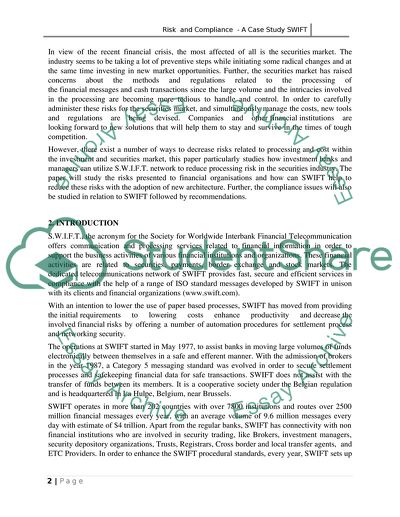Cite this document
(The Advantage of SWIFT to Financial Institutions Assignment, n.d.)
The Advantage of SWIFT to Financial Institutions Assignment. Retrieved from https://studentshare.org/finance-accounting/1733197-risk-and-compliance
The Advantage of SWIFT to Financial Institutions Assignment. Retrieved from https://studentshare.org/finance-accounting/1733197-risk-and-compliance
(The Advantage of SWIFT to Financial Institutions Assignment)
The Advantage of SWIFT to Financial Institutions Assignment. https://studentshare.org/finance-accounting/1733197-risk-and-compliance.
The Advantage of SWIFT to Financial Institutions Assignment. https://studentshare.org/finance-accounting/1733197-risk-and-compliance.
“The Advantage of SWIFT to Financial Institutions Assignment”, n.d. https://studentshare.org/finance-accounting/1733197-risk-and-compliance.


